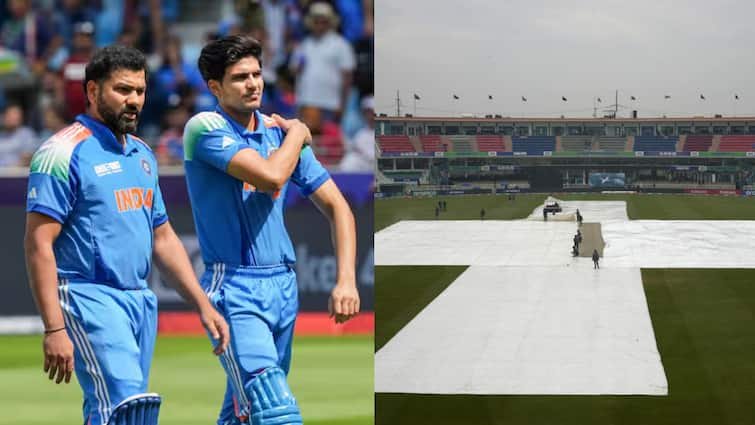The Champions Trophy has witnessed a thrilling start with eight teams, and now we’re down to the final four, with India, Australia, New Zealand, and South Africa battling it out in the semifinals. However, with three matches already being washed out due to rain, a nagging question arises – what happens if the semifinal matches are affected by rain? Are there reserve days in place, and if so, how do they work? Moreover, what are the rules for determining the outcome of a rain-affected one-day match?
The Champions Trophy 2025 has already seen its fair share of rain-curtailed matches, with the Australia vs. South Africa match being the first to fall victim to the weather. This was followed by the Pakistan vs. Bangladesh match on February 27 and the Afghanistan vs. Australia match on February 28, neither of which had a reserve day allocated.
Fortunately, the organizers have learned from these experiences, and both semifinal matches have been allocated a reserve day. According to the rules, if a match is interrupted by rain and cannot be completed on the scheduled day, it will resume on the reserve day from where it left off. If no play is possible on the scheduled day due to rain, the match will start fresh on the reserve day.
In the event that the rain persists and the match cannot be completed over the two days, the team that finished higher in the league table will be declared the winner. So, if the India vs. Australia semifinal is washed out, India will advance to the final.
Understanding the Duckworth-Lewis Method
When a match is interrupted by rain, the Duckworth-Lewis (D/L) method comes into play. This system takes into account the number of overs lost and adjusts the target score accordingly. A pre-determined table is used to calculate the reduction in overs and runs. For a team to be declared the winner under the D/L method, both teams must have faced a minimum of 20 overs.
How the D/L Method Works
- The D/L method is used to calculate the target score for the team batting second in a rain-affected match.
- The system takes into account the number of overs lost and the resources (overs) available to the team batting second.
- A team must face a minimum of 20 overs to be eligible for a D/L victory.
With the semifinals just around the corner, fans will be keeping their fingers crossed for dry weather. However, with the rules and reserve days in place, we can rest assured that the tournament will conclude in a fair and exciting manner.

